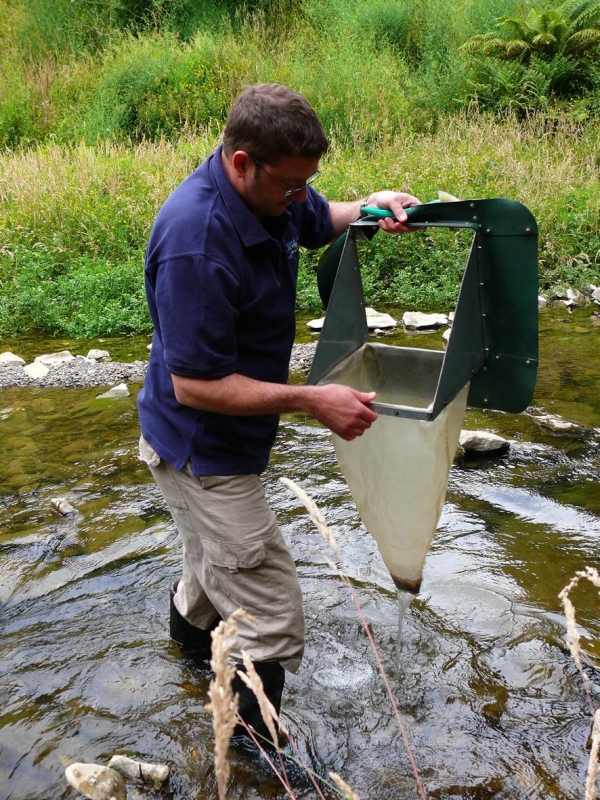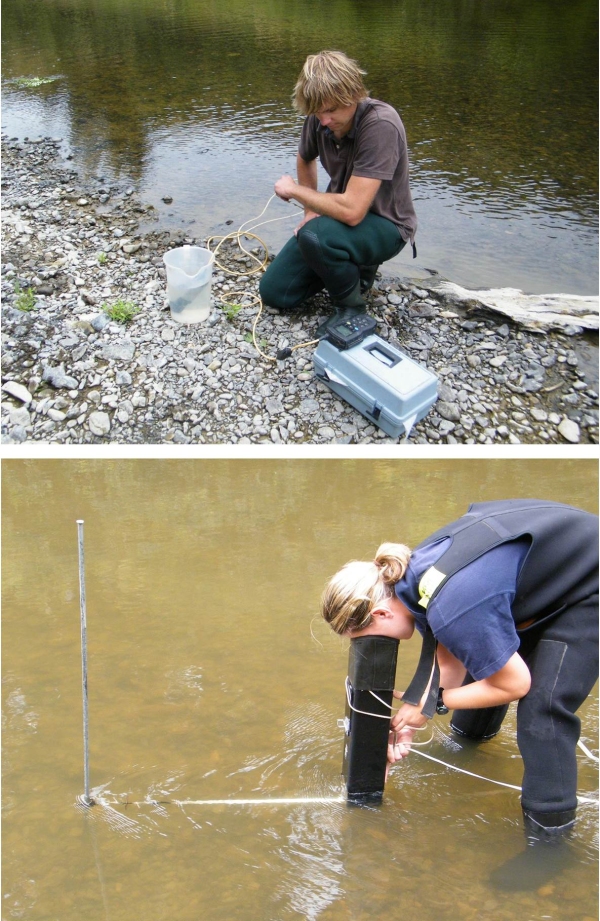NIWA's research on freshwater monitoring and reporting is one of three research areas within the 'Values, Monitoring and Outcomes' (VMO) programme led by Landcare Research.
The issue
Most freshwater SoE (State of the Environment) monitoring in NZ is done by regional councils, but there is considerable diversity in the intensity of monitoring, the variables which are covered, the protocols used, and how the results are reported and used to inform policy.
This NIWA research project on water monitoring and reporting is aimed at improving regional data collection for both rivers and lakes, and improving the application of that monitoring data in practical regional water management.
Considerable closely-related work has been done by NIWA under contract to the Ministry for the Environment for their NEMaR (National Environmental Monitoring and Reporting) project.
NEMaR aims to achieve more consistent and dependable regional SoE monitoring and reporting on freshwaters, to support national SoE reporting for New Zealand.
The solution
This research looks to improve regional monitoring and reporting so that the values of water for different people are better protected, policy is better informed and community efforts are better supported.
For example, we have developed statistical tools for analysing water monitoring data, including trends over time, and have studied the potential applications of continuous monitoring with current water quality instrumentation.
There is an increasing drive by community groups to conduct water monitoring – often where rehabilitation efforts are expected to improve water quality and biodiversity.
This is very consistent with greater community collaborative involvement in water management as envisaged by the Freshwater reforms (MfE 2013).
We are supporting this community aspiration through a range of research initiatives, some of which are outlined below.
In the closely-related NEMaR project we have recommended a national set of variables and protocols for regional monitoring, and composite indices for national reporting on the condition of waters.
We have used VMO funding to add value to the NEMaR work in various ways, including presenting the NEMaR findings at scientific meetings.
The result
NIWA scientists are working on a range of topics in the VMO programme, some of which are discussed below. So far there have been some outputs, but the project is primarily a work in progress at this point (May 2013).
Improved statistical tools for environmental reporting including trends.
We have developed refined methods for testing hypotheses using monitoring data that consider the strength of evidence more 'holistically' than is traditional. Innovations are being incorporated into our Time Trends freeware
Improved regional SoE monitoring of freshwaters, focussed on increased dependability and national consistency of datasets. (The NEMaR project and associated work).
A series of NEMaR reports have been produced that will guide future regional water monitoring and reporting in NZ, and promote better regional water management and better national SoE reporting.
A key scientific paper on NIWA's National Rivers Water Quality Network (NRWQN) (Davies-Colley et al. 2011), has been completed with VMO funding. The NRWQN provides a model for NEMaR river monitoring, with virtually identical monitoring variables and protocols, and has been used to estimate costs of achieving nationally consistent regional monitoring.
Community consultation (underpinned by Bayesian Belief Networks) on water management.
In association with the Hawkes Bay Regional Council, we are assisting in a pilot community consultation focussed on management of the Heretaunga plains and contributing rivers. NIWA are leading the development of an influence diagram and Bayesian Belief Networks (BBNs) for these systems. BBNs, and the influence diagrams they incorporate, are powerful tools for visualising and formalising what is (collectively) known about a complex system, such as a water resource. Such tools will be needed for community collaboration envisaged in the Freshwater reforms (MfE 2013).
Community (volunteer) monitoring of waters, particularly in relation to rehabilitation efforts and with regard to Maori culture and formal SoE monitoring by regional councils.
We are working with some regional councils on how volunteer monitoring can be integrated with and extend formal SoE monitoring. This includes assessing how well community monitoring results agree with regional council SoE data. We expect that councils will increasingly need to foster, and provide technical support for, community monitoring, and we envisage developing resources to assist both councils and community groups.
We are also revamping the SHMAK (Stream Health Monitoring and Assessment Kit), originally developed by NIWA in 2000 to support community monitoring of streams. We plan to incorporate a wider set of keys for identification of algae and invertebrate animals. We will also extend the water quality capability of SHMAK to include several important water pollutants not currently covered, notably nitrogen, phosphorus and faecal indicator bacteria.
References
- Freshwater reform 2013 and beyond, http://www.mfe.govt.nz/publications/water/freshwater-reform-2013
- Davies-Colley, R. J., Smith, D. G., Ward, R. C., Bryers, G. G., McBride, G. B., Quinn, J. M. and Scarsbrook, M. R. (2011), Twenty Years of New Zealand's National Rivers Water Quality Network: Benefits of Careful Design and Consistent Operation. JAWRA Journal of the American Water Resources Association, 47: 750–771. DOI: 10.1111/j.1752-1688.2011.00554.x
More information on the Values, Monitoring and Outcomes' (VMO) programme


